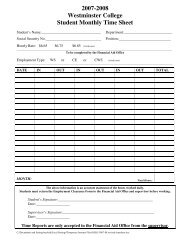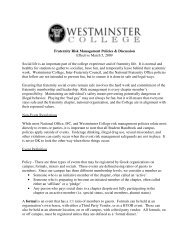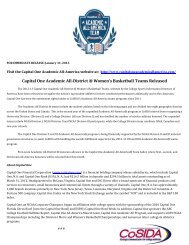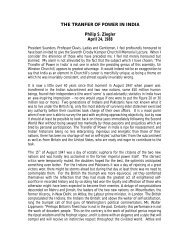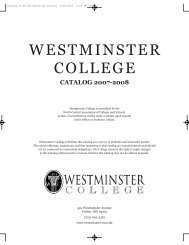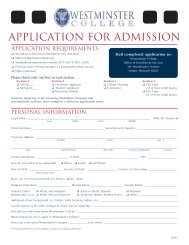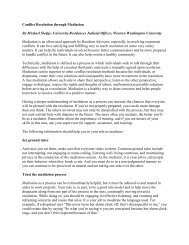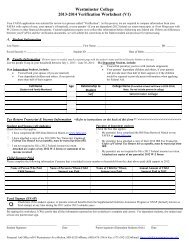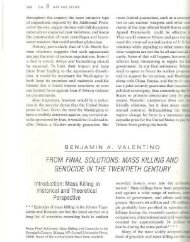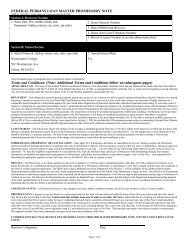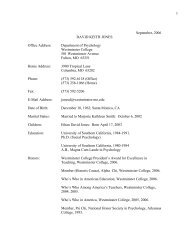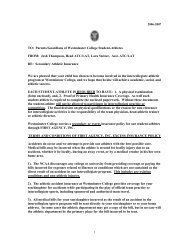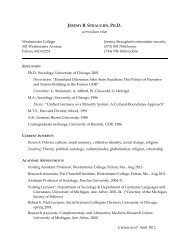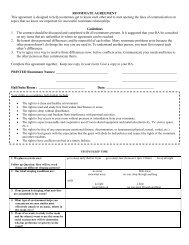Sickle Cell Trait Policy - Westminster College
Sickle Cell Trait Policy - Westminster College
Sickle Cell Trait Policy - Westminster College
You also want an ePaper? Increase the reach of your titles
YUMPU automatically turns print PDFs into web optimized ePapers that Google loves.
<strong>Sickle</strong> <strong>Cell</strong> <strong>Trait</strong> Educational InformationWhat is <strong>Sickle</strong> <strong>Cell</strong> <strong>Trait</strong>?• <strong>Sickle</strong> cell trait is an inherited condition of the oxygen-carrying protein, hemoglobin, in the redblood cells.• Although sickle cell trait is most predominant in African-Americans and those ofMediterranean, Middle Eastern, Indian, Caribbean, and South/Central American ancestry,persons of all races and ancestry may test positive for sickle cell trait.• <strong>Sickle</strong> cell trait is usually benign, but during intense, sustained exercise, hypoxia (lack ofoxygen) in the muscles may cause sickling of red blood cells. The red blood cells changefrom the normal disc shape to a crescent or “sickle” shape. These cells can then accumulatein the bloodstream and block the blood vessels, leading to collapse from the rapidbreakdown of muscles starved of blood.• This is more likely to occur with timed runs, intense exertion of any type for 2-3 continuousminutes without a rest period, intense drills and other spurts of exercise after prolongedconditioning exercises, and other extreme conditioning sessions.• Common signs and symptoms of a sickle cell emergency include: increased pain and weaknessin the working muscles (especially the legs, buttocks, lower back); cramping type musclepain; soft, flaccid muscle tone; and/or sudden onset of symptoms without early warningsigns.For athletes positive for the sickle cell trait, the following reasonable precautions will be taken inorder to appropriately manage the condition:• The athlete will slowly build up the intensity and duration of their training. This will alsoinclude longer periods for rest and recovery.• The athlete will participate in pre-season conditioning programs in order to prepare for therigors of the competitive season.• The athlete may have modified performance tests, such as mile runs, serial sprints, etc.• The athlete will stop all activity and seek medical evaluation with the onset of symptoms,such as muscle cramping, pain, swelling, weakness, tenderness, undue fatigue, orshortness of breath.• The athlete will be given the opportunity to set their own pace during conditioning drills.• The athlete’s participation may be altered during periods of heat stress, dehydration, asthma,illness, or activity in high altitudes.



